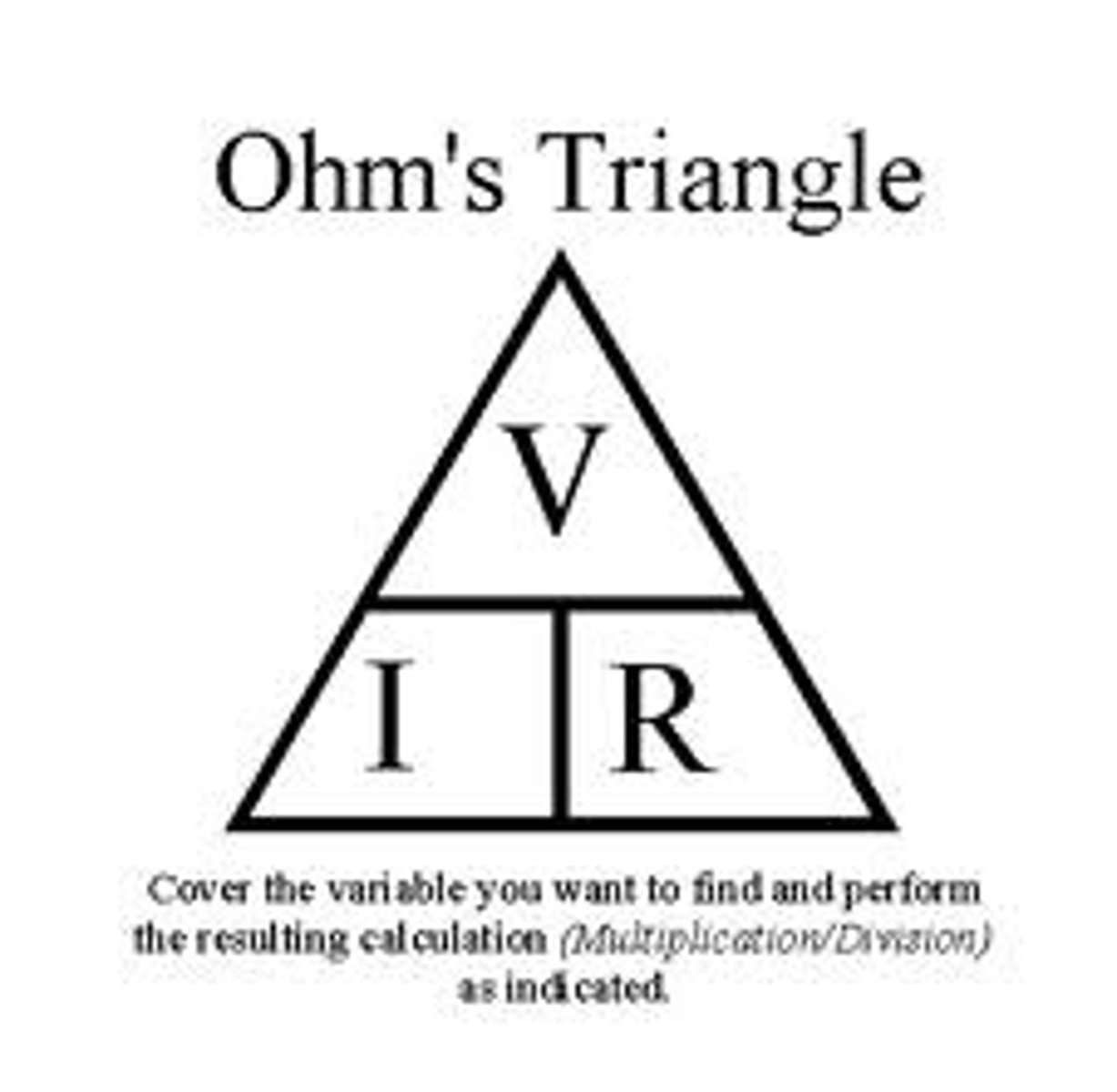Physics
What is electricity?
The flow of electrons through a conductor
What is current (I)?
The electron flow caused when electrons move through a conductor and carry electrical energy from one place to another
1/37
There's no tags or description
Looks like no tags are added yet.
Name | Mastery | Learn | Test | Matching | Spaced |
|---|
No study sessions yet.
38 Terms
What is electricity?
The flow of electrons through a conductor
What is current (I)?
The electron flow caused when electrons move through a conductor and carry electrical energy from one place to another
What are the two types of current
direct current (DC) and alternating current (AC)
What is current measured with?
Ammeter
What is the unit of measurement for current?
Amperes/Amps (A)
What is voltage (V)?
The measure of potential energy per unit of charge supplied by an energy source
What is voltage measured with?
Voltmeter
What is the unit of measurement for voltage?
Volts
What is voltage drop?
The loss of potential energy when it flows through a component in a circuit
What is resistance (R)?
The measure of how much a component slows down the flow of electrical charge / Opposes the flow of current.
What is resistance measured with?
To find the resistance, you need to use Ohm's Law. You also need to know the voltage and current in the circuit.
What is the unit of measurement for resistance?
Ohms (Ω)
What is Ohm's Law?
V = I x R; Voltage = Current x Resistance

What's a series circuit?
a single loop where all the circuit components are present - switch, battery, and bulb.
When you have greater resistance in a series circuit, does the voltage & current increase? KEY WORD: SERIES
Voltage increases with the resistance (directionally proportional), current always stays the same in a series circuit
What's a parallel circuit?
A circuit with more than one branch/loop of wire and each branch has circuit components.
What happens to current and voltage in each branch in a parallel circuit?
Current is split between each branch while voltage is the same in every branch.
When you have greater resistance in a parallel circuit, does the voltage & current increase? KEY WORD: PARALLEL
Current decreases (inversely proportional) while voltage stays the same since it's not affected by resistance in a parallel circuit.
If there's more than one blub on a branch in a parallel circuit, is the voltage split equally between each bulb or is the same for each bulb?
The voltage is split equally between each bulb.
What factors affect electricity?
Wire length, wire thickness, and wire material.
What is a conductor? Does it have have high or low resistance? Give at least 2 examples.
A conductor is a material that easily allows the electrical current to flow through. It has low resistance. Examples are silver, copper, and aluminum.
What is a insulator? Does it have have high or low resistance? Give at least 3 examples.
A insulator is a material that doesn't easily allow the electrical current to flow through. It has high resistance. Examples are rubber, wood, plastic and glass.
Are current and resistance directly proportional or inversely proportional?
inversely proportional
Are current and voltage directly proportional or inversely proportional?
directly proportional
Are voltage and resistance directly proportional or inversely proportional?
directly proportional
In Australia, how much volts is each home supplied, what frequency is it (Hz), and what type of current do they use?
Each home is supplied 240V with a frequency of 50Hz and they use alternating current.
Why do household circuits use alternating current?
Because AC's electrons go back and forth very quickly and don't just go in one direct direction.
Are household circuits parallel or series? Why?
Household circuits are parallel, this is because with a parallel circuit you can turn each component one and off individually instead of turning the whole thing off. Additionally, each branch gets 240V instead of it getting divided like a series circuit.
What is the active wire? - power plugs
The active wire carries the electrical current back to the device, it's normally red.
What is the neutral wire? -power plugs
The neutral wire carries the electrical current away from the device, it's normally black or blue.
What is the earth wire? -power plugs
The earth wire is not required for the device to work but it's an important safety feature, it's normally green.
What is a fuse?
A fuse is a delicate piece of wire that when the current running through the circuit reaches a certain level, the wire heats up and snaps. It stops the flow of the current. You need to replace it once it's snapped.
What is a circuit breaker?
Circuit breakers will turn their switch off when the current is too high to stop the current. It can be switched back on when the problem is fixed.
How is an earth wire different from a fuse?
The earth wire's different from a fuse because to stop the current from being too high, the earth wire directs it away from the device and to the Earth. The fuse however just heats up and snaps which automatically stops the current because the circuit's broken. Both stop the current from reaching the device.
What is an residual current devices (RCD)
The RCD turns off when it senses that the active wire and the neutral wire have a different current, hence switching off the device.
RCD off when active wire and neutral wire diff current.
What is double insulation?
Two layers of insulation, plugs don't need the earth wire because of this.
What are the parts of the body that conduct and insulate
Parts of the body that conduct is the chest, specifically the heart and lungs. Parts of the body that insulate is the legs.
How long does an electrical shock take to kill a human? How many amps?
More than 0.2 seconds and 0.05 amps.